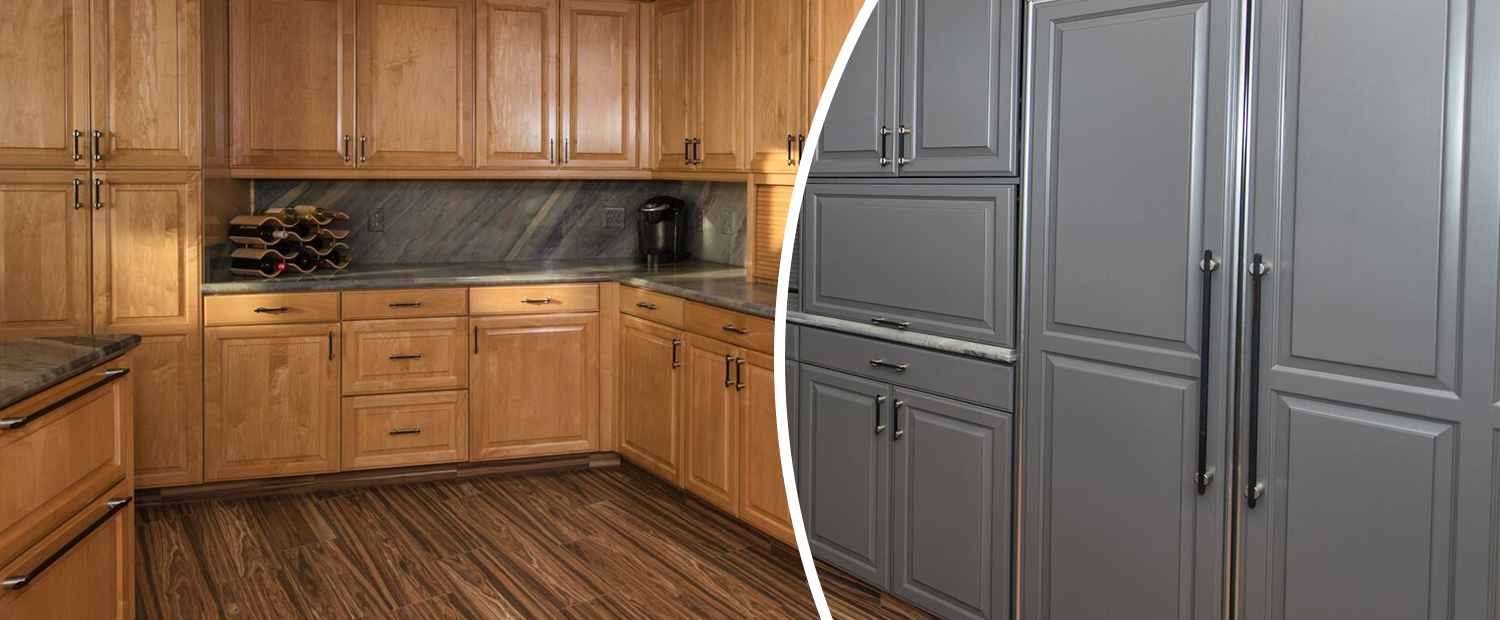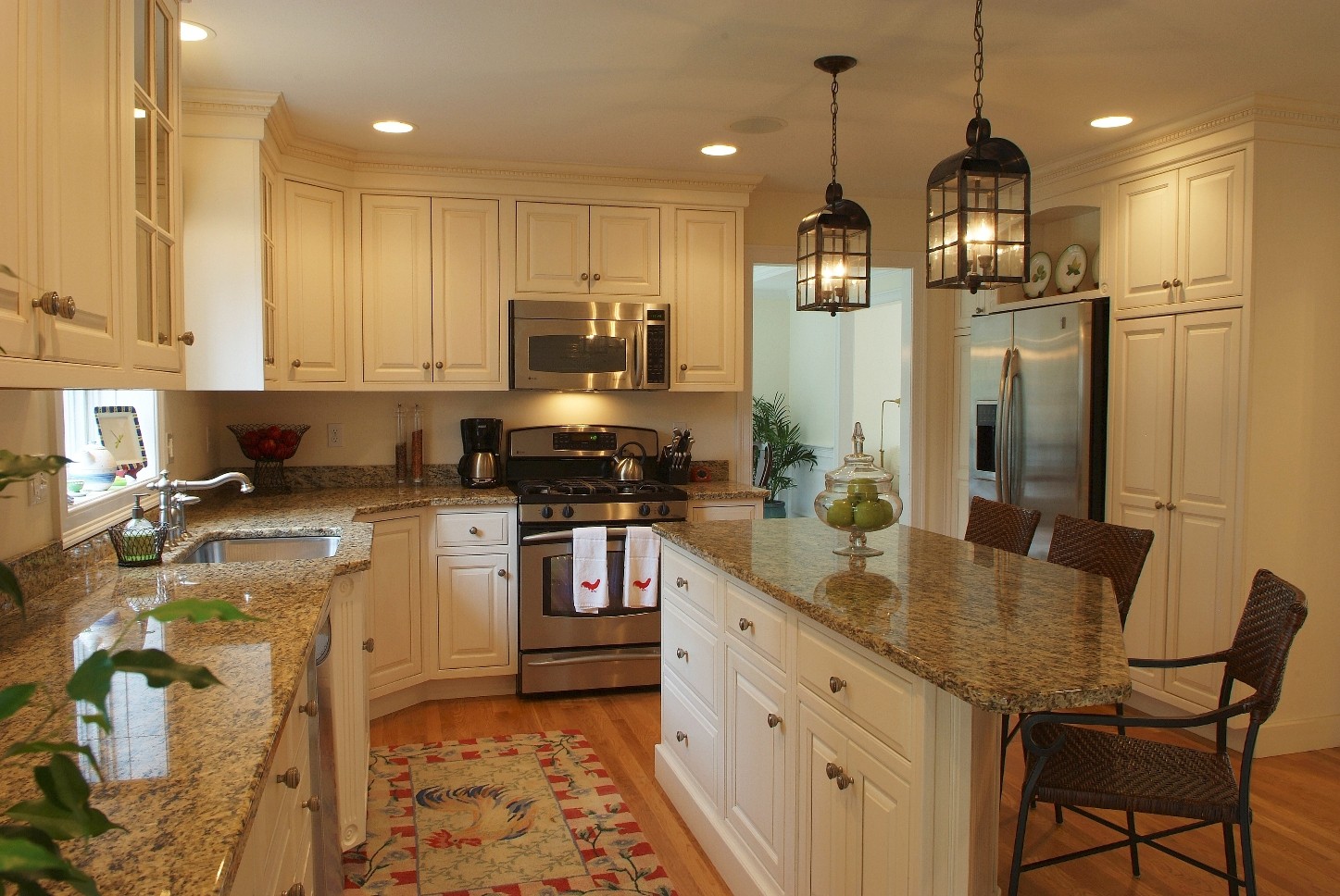Refacing Materials: Kitchen Cabinet Doors Refacing Supplies

Transforming your kitchen cabinets doesn’t require a complete overhaul. Refacing offers a cost-effective and visually stunning alternative, breathing new life into your space. Choosing the right materials is crucial for achieving both durability and aesthetic appeal. This guide will help you navigate the options and make informed decisions.
Refacing Material Comparison
Selecting the right material depends on your budget, desired look, and the level of durability you need. Here’s a comparison of popular options:
| Material | Cost | Durability | Appearance |
|---|---|---|---|
| Wood Veneer | Medium to High | High; resistant to scratches and dents with proper care | Natural, elegant; offers a wide variety of wood grains and colors |
| Laminate | Low to Medium | Medium; susceptible to chipping and scratches, but relatively easy to clean | Wide range of colors and patterns; can mimic the look of natural materials |
| Vinyl | Low | Low; prone to scratches and peeling, especially in high-traffic areas | Variety of colors and patterns; often used for a more budget-friendly update |
Preparing Cabinet Doors for Refacing
Proper preparation is key to a successful refacing project. This ensures a smooth, even surface for your new material.
Kitchen cabinet doors refacing supplies – Before applying any new material, thorough cleaning and preparation of the cabinet doors is essential. This process removes any dirt, grease, or old finish that could interfere with adhesion.
- Tools: Cleaning solution, sandpaper (various grits), tack cloth, primer, paintbrushes or rollers.
- Steps:
- Clean the cabinet doors thoroughly with a suitable cleaning solution, paying attention to any grease or grime.
- Sand the surfaces with progressively finer grits of sandpaper to create a smooth, even surface. This step is particularly important for older cabinets with uneven finishes.
- Remove sanding dust with a tack cloth. This ensures a clean surface for primer adhesion.
- Apply a coat of primer. This helps to seal the wood and ensures better adhesion of the new material and finish.
Applying Wood Veneer
Wood veneer offers a luxurious look and feel. Applying it correctly requires attention to detail, but the results are well worth the effort.
Applying wood veneer involves careful preparation and precise application techniques to ensure a seamless and professional finish. Edge banding is crucial for a complete, polished look.
- Measure and Cut: Carefully measure and cut the veneer to the exact dimensions of the cabinet door, adding a small margin for trimming.
- Adhesive Application: Apply a suitable adhesive to both the back of the veneer and the prepared cabinet door surface. Follow the adhesive manufacturer’s instructions carefully.
- Veneer Placement: Carefully position the veneer onto the cabinet door, ensuring it is aligned correctly. Use a roller or smoothing tool to eliminate air bubbles and ensure proper adhesion.
- Trimming and Edge Banding: Once the adhesive is dry, trim any excess veneer using a sharp utility knife. Apply edge banding to the edges of the veneer, creating a clean and professional finish.
- Finishing: After the adhesive has fully cured, sand the veneer lightly to smooth any imperfections. Apply a suitable finish, such as a clear coat or stain, to protect and enhance the veneer.
Cabinet Door Finishes
The final finish significantly impacts the overall look and feel of your refaced cabinets.
Choosing the right finish depends on the desired aesthetic and level of protection needed. Each type offers unique advantages and disadvantages.
- Paint: Offers excellent durability and a wide range of colors. However, it can hide the natural grain of the wood.
- Stain: Enhances the natural beauty of the wood grain, providing a more natural look. It offers less protection than paint and requires more maintenance.
- Lacquer: Provides a durable, high-gloss finish. It is more expensive than paint or stain, but offers excellent protection and a beautiful shine.
Choosing and Installing Hardware

Refacing your kitchen cabinets is a rewarding project, and choosing the right hardware is the finishing touch that truly elevates the look and feel of your space. The right hardware can dramatically impact the overall style, adding personality and functionality to your newly refreshed cabinets. Let’s explore the options available and the process of installation.
Cabinet Hardware Comparison
Selecting the perfect knobs, pulls, and hinges involves considering style, material, cost, and ease of installation. The following table summarizes key differences:
| Hardware Type | Style | Material | Cost (Approximate) | Installation Difficulty |
|---|---|---|---|---|
| Knobs | Traditional, modern, rustic, ornate | Ceramic, metal (brass, chrome, nickel), glass, wood | $2-$50+ per knob | Easy |
| Pulls | Modern, minimalist, shaker, traditional | Metal (stainless steel, bronze, pewter), wood, glass | $5-$75+ per pull | Easy to Moderate |
| Hinges | Overlay, inset, self-closing | Metal (steel, brass), nickel-plated | $1-$10+ per hinge | Moderate |
Note: Costs are estimates and can vary significantly based on brand, material, and design.
Installing New Hinges
Replacing hinges is a straightforward process. First, carefully remove the old hinges using a screwdriver, taking note of their placement on the door and cabinet. A visual description would show two hinges positioned approximately 2 inches from the top and bottom edges of the cabinet door, equidistant from the sides. This ensures even weight distribution and prevents sagging. Then, align the new hinges with the existing screw holes (if possible) or mark new locations and pre-drill pilot holes to avoid splitting the wood. Finally, attach the new hinges securely using screws. Remember to align the hinges precisely for proper door alignment and smooth operation.
Hardware Selection for Different Kitchen Styles
The style of your cabinet hardware should complement your overall kitchen design.
For a modern kitchen, sleek, minimalist pulls in brushed nickel or stainless steel create a clean, contemporary aesthetic. Consider bar pulls or cup pulls for a sophisticated touch.
Traditional kitchens benefit from ornate knobs or cup pulls in brushed brass or oil-rubbed bronze. These add a touch of elegance and warmth. Consider detailed designs or intricate patterns.
A farmhouse kitchen calls for simpler, more rustic hardware. Consider knobs or pulls in matte black, pewter, or distressed zinc. A slightly aged finish adds character and charm.
Aligning and Adjusting Cabinet Doors and Drawers
After refacing and installing new hardware, minor adjustments may be needed to ensure proper alignment. Loose screws can cause misalignment; simply retighten them. If doors are uneven, check hinge placement and adjust the screws on the hinges to fine-tune the alignment. For drawers, ensure the slides are properly seated and adjusted. If the drawer is binding, check for any obstructions and adjust the slides as needed. Persistent issues may require more detailed troubleshooting or professional assistance.
Project Planning and Execution

Refacing your kitchen cabinets is a rewarding project, but careful planning ensures a smooth and successful transformation. This section details the budgeting, planning, and execution phases, empowering you to tackle this home improvement with confidence. Remember, accuracy is key, especially when measuring for materials.
Budget Breakdown for Cabinet Refacing
A realistic budget is crucial. Costs vary based on cabinet size, material choices, and whether you hire help. This table provides a sample budget; adjust it to your specific needs.
| Item | Estimated Cost |
|---|---|
| Refacing Materials (doors, veneer, edging) | $500 – $1500 |
| Hardware (hinges, knobs, pulls) | $100 – $300 |
| Tools (if not already owned) | $50 – $200 (e.g., measuring tape, sandpaper, wood glue) |
| Primer and Paint (if needed) | $50 – $150 |
| Labor (if hiring a professional) | $1000 – $3000+ (depending on project size and location) |
| Total Estimated Cost | $700 – $6150+ |
Note: Prices are estimates and can vary significantly depending on location, material choices, and project complexity. Always get multiple quotes for labor if hiring a professional.
Step-by-Step Project Plan, Kitchen cabinet doors refacing supplies
A well-defined plan keeps the project on track. This plan Artikels the key stages, allowing for flexibility as needed.
Prior to starting, gather all necessary materials and tools. This will save you valuable time and prevent delays.
- Preparation (1-2 days): Thoroughly clean cabinets, remove existing hardware, and take accurate measurements of all doors and drawer fronts. Prepare the work area, ensuring adequate lighting and ventilation.
- Refacing (3-5 days): Apply veneer or new door skins according to manufacturer instructions. Pay close attention to detail, ensuring smooth, even application. Allow ample drying time between coats.
- Hardware Installation (1 day): Install new hinges, knobs, and pulls, ensuring they are aligned and securely fastened. Take your time to ensure everything functions smoothly.
- Finishing Touches (1/2 day): Inspect the finished cabinets for any imperfections and address them. Clean the area thoroughly.
Accurate Cabinet Door Measurement
Precise measurements prevent material waste and ensure a perfect fit. Measure each door individually, recording dimensions in a clear, organized manner.
Measuring errors can lead to significant problems, so it’s essential to employ the right technique. Below are tips to help you measure your cabinets effectively.
- Use a steel measuring tape for accuracy.
- Measure both height and width in multiple places to account for slight variations.
- Record measurements to the nearest 1/16th of an inch.
- Double-check all measurements before purchasing materials.
- Consider adding a small margin of error (e.g., 1/8 inch) to account for potential inconsistencies.
